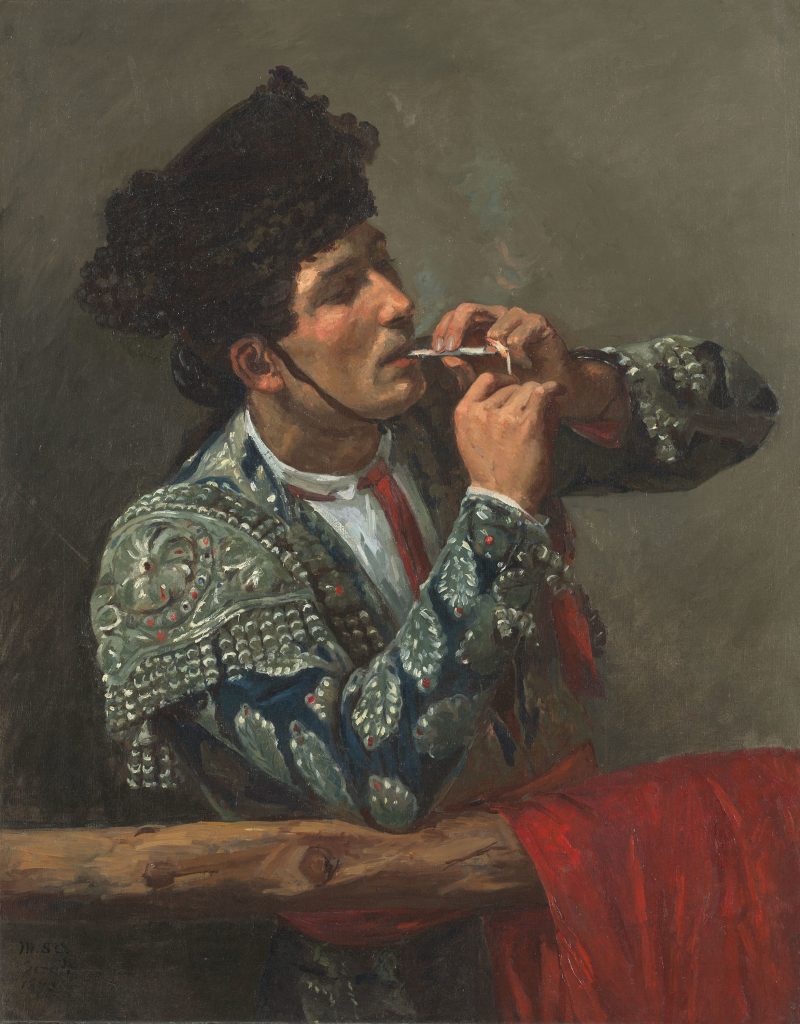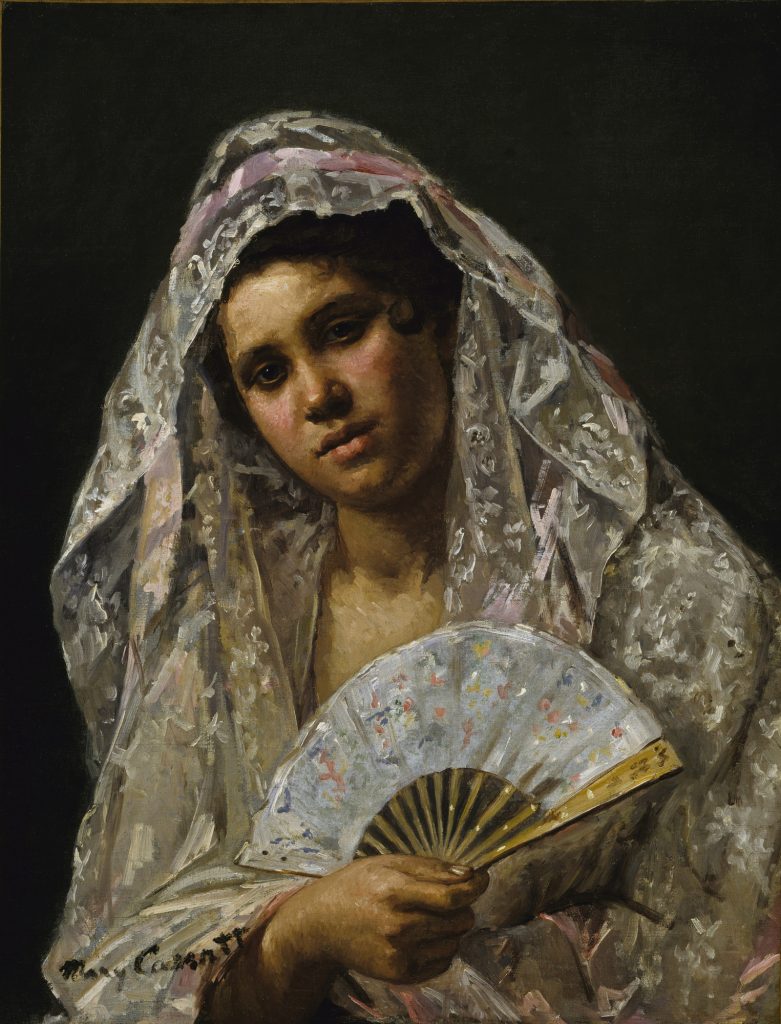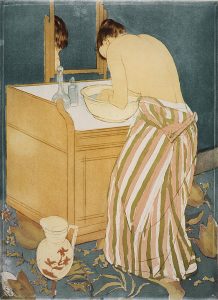Mary Cassatt
Mary Cassatt, The Cup of Tea, is at Western House Hotel on the cliff-top
BACKGROUND AND EARLY LIFE
Mary Stevenson Cassatt (1844 – 1926) was born in America but lived much of her adult life in France where she befriended Edgar Degas and exhibited with the Impressionists. Cassatt often created images of the social and private lives of women, with particular emphasis on the intimate bonds between mothers and children. Cassat was an outspoken advocate for women’s equality, campaigning with her friends for equal travel scholarships for students in the 1860s, and the right to vote in the 1910s.
Cassatt was born into an upper-middle-class family: Her fatherwas a successful stockbroker, her mother, Katherine, came from a banking family. Katherine Cassatt, educated and well-read, had a profound influence on her daughter. Mary Cassatt grew up in an environment that viewed travel as integral to education; she spent five years in Europe and visited many of the capitals, including London, Paris, and Berlin. While abroad she learned German and French and had her first lessons in drawing and music. It is likely that her first exposure to art was at the Paris World’s Fair of 1855. Also in the exhibition were Edgar Degas and Camille Pissarro, both of whom were later became her colleagues and mentors.
Though her family objected to her becoming a professional artist, Cassatt began studying painting at the Pennsylvania Academy of the Fine Arts in Philadelphia at the early age of 15. Part of her parents’ concern may have been Cassatt’s exposure to feminist ideas and the bohemian behavior of some of the male students. As such, Cassatt and her network of friends were lifelong advocates of equal rights for the sexes.
She continued her studies from 1861 through 1865. Impatient with the slow pace of instruction and the patronizing attitude of the male students and teachers, she decided to study the old masters on her own. She later said: “There was no teaching” at the Academy. Female students could not use live models, and the training was primarily drawing from casts.
PARIS AND THE FRENCH ART SCENE 1866-1870
Cassatt decided to end her studies and after overcoming her father’s objections, she moved to Paris in 1866, with her mother and family friends acting as chaperones. Since women could not yet attend the École des Beaux-Arts, Cassatt applied to study privately with masters from the school and augmented her artistic training with daily copying in the Louvre, the museum also served as a social place for Frenchmen and American female students, who, like Cassatt, were not allowed to attend cafes where the avant-garde socialized.
The French art scene was in a process of change, as radical artists such as Courbet and Édouard Manet tried to break away from accepted Academic tradition and the Impressionists were in their formative years. Cassatt’s friend Eliza Haldeman wrote home that artists “are leaving the Academy style and each seeking a new way, consequently just now everything is Chaos.” Cassatt, on the other hand, continued to work in the traditional manner, submitting works to the Salon for over ten years, with increasing frustration.
AMERICA 1870-71
Returning to the United States in the late summer of 1870 Cassatt lived with her family. Her father continued to resist her chosen vocation, and paid for her basic needs, but not her art supplies. Cassatt placed two of her paintings in a New York gallery and found many admirers but no purchasers. She was also dismayed at the lack of paintings to study while staying at her summer residence. Cassatt even considered giving up art, as she was determined to make an independent living. She wrote in a letter of July 1871, “I have given up my studio & torn up my father’s portrait, & have not touched a brush for six weeks nor ever will again until I see some prospect of getting back to Europe.”
Her work had attracted the attention of Roman Catholic Bishop of Pittsburgh, who commissioned her to paint two copies of paintings by Correggio, in Parma, Italy, advancing her enough money to cover her travel expenses and part of her stay. In her excitement she wrote, “O how wild I am to get to work, my fingers farely itch & my eyes water to see a fine picture again”.
EUROPE, PARIS AND THE IMPRESSIONISTS 1871 – 1886
Within months of her return to Europe in the autumn of 1871, Cassatt’s prospects improved. Her painting Two Women Throwing Flowers During Carnival was well received in the Salon of 1872, and was purchased. She attracted much favorable notice in Italy and was supported and encouraged by the art community there: “All Parma is talking of Miss Cassatt and her picture, and everyone is anxious to know her” Cassatt traveled to Madrid and Seville, where she painted a group of paintings of Spanish subjects, including Spanish Dancer Wearing a Lace Mantilla (1873).
In 1874, she made the decision to take up residence in France. She was joined by her sister Lydia who shared an apartment with her. Cassatt opened a studio in Paris, she continued to express criticism of the politics of the Salon and its taste for the conventional. She was blunt in her comments, as reported by Sartain, “she is entirely too slashing, snubs all modern art, disdains the Salon pictures…” Cassatt saw that works by female artists were often dismissed with contempt unless the artist had a friend or protector on the jury, and she would not flirt with jurors to curry favor.
In 1877, both her entries were rejected, and for the first time in seven years she had no works in the Salon. At this low point in her career she was invited by Edgar Degas to show her works with the Impressionists, a group that had begun their own series of independent exhibitions in 1874 with much notoriety. They already had one female member, artist Berthe Morisot, who became Cassatt’s friend and colleague. They tended to prefer plein air painting and the application of vibrant color in separate strokes with little pre-mixing, which allows the eye to merge the results in an “impressionistic” manner. Critics thought The Impressionists had been “afflicted with some hitherto unknown disease of the eye”.
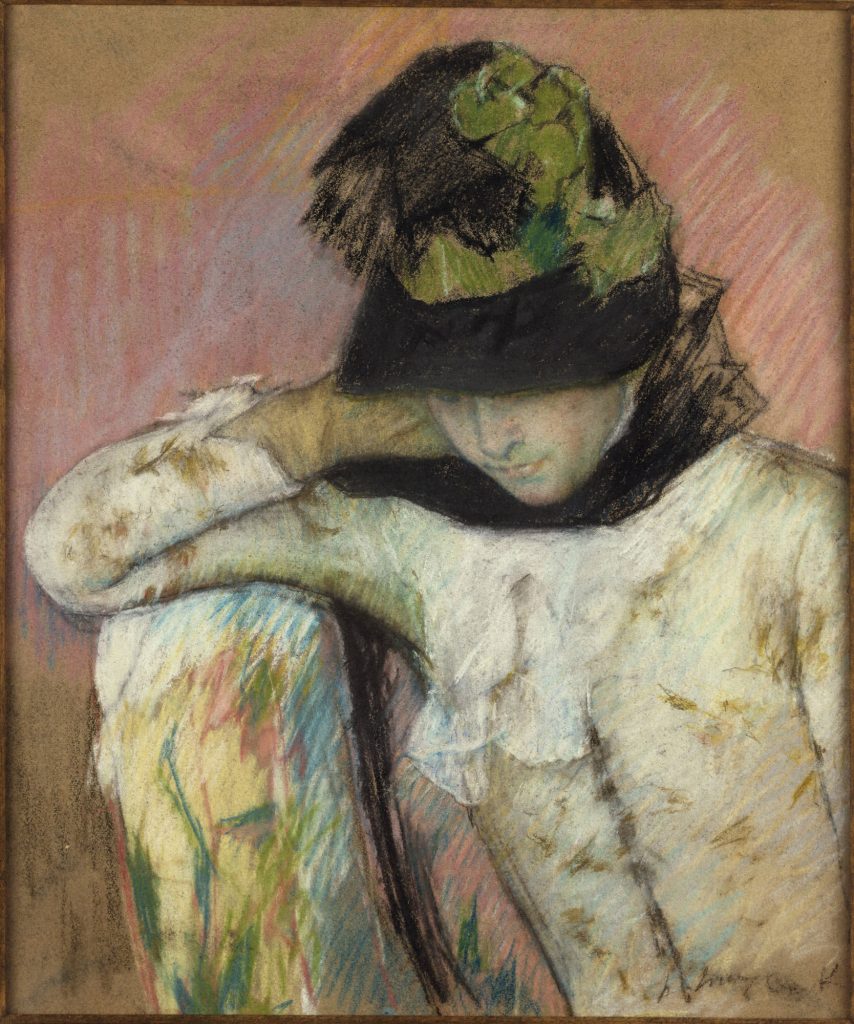
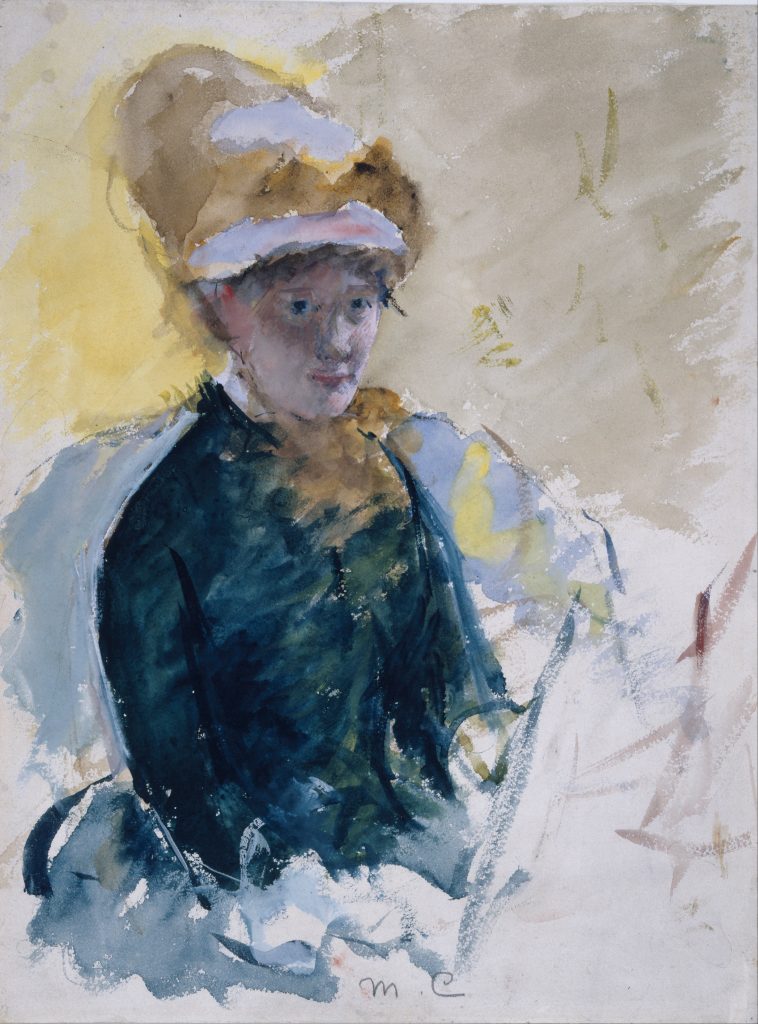
Self Portrait
Cassatt admired Degas, “He changed my life. I saw art then as I wanted to see it.” She accepted Degas’ invitation with enthusiasm and began preparing paintings for the next Impressionist show, planned for 1878. She felt comfortable with the Impressionists declaring: “we are carrying on a despairing fight and need all our forces”. Unable to attend cafes together without attracting unfavorable attention, they met privately and at exhibitions. She now hoped for success selling paintings to the sophisticated Parisians who preferred the avant-garde. Her style had gained a new spontaneity, previously a studio-bound artist, she began to carry a sketchbook with her while out-of-doors or at the theater, and recording the scenes she saw.
She was described by Gustave Geffroy as one of “les trois grandes dames” (the three great ladies) of Impressionism alongside Marie Bracquemond and Berthe Morisot. In 1879, Diego Martelli compared her to Degas, as they both sought to depict movement, light, and design in the most modern sense.
In 1877, Cassatt was joined in Paris by her father and mother, Mary valued their companionship, as neither she nor Lydia had married. Mary had decided early in life that marriage would be incompatible with her career. Lydia, who was frequently painted by her sister, suffered from recurrent bouts of illness, and her death in 1882 left Cassatt temporarily unable to work.

Degas had considerable influence on Cassatt. Both were highly experimental in their use of materials, trying distemper and metallic paints. She became expert in the use of pastels, eventually creating many of her most important works in this medium. Degas also introduced her to etching, of which he was a recognized master. The two worked side by side for a while, and her draftsmanship gained considerable strength under his tutelage. She treasured his friendship but learned not to expect too much from his temperamental nature. The sophisticated and well-dressed Degas, then forty-five, was a welcome dinner guest at the Cassatt residence, and likewise they at his soirées.
The Impressionist exhibit of 1879 was the most successful to date, despite the absence of Renoir, Sisley, Manet and Cézanne, who were attempting once again to gain recognition at the Salon. The group made a profit and sold many works, although the criticism was as harsh as ever. The Revue des Deux Mondes wrote, “M. Degas and Mlle. Cassatt are, nevertheless, the only artists who distinguish themselves… and who offer some attraction and some excuse in the pretentious show of window dressing and infantile daubing”.
She participated in the Impressionist Exhibitions that followed in 1880 and 1881, and she remained an active member of the Impressionist circle until 1886.
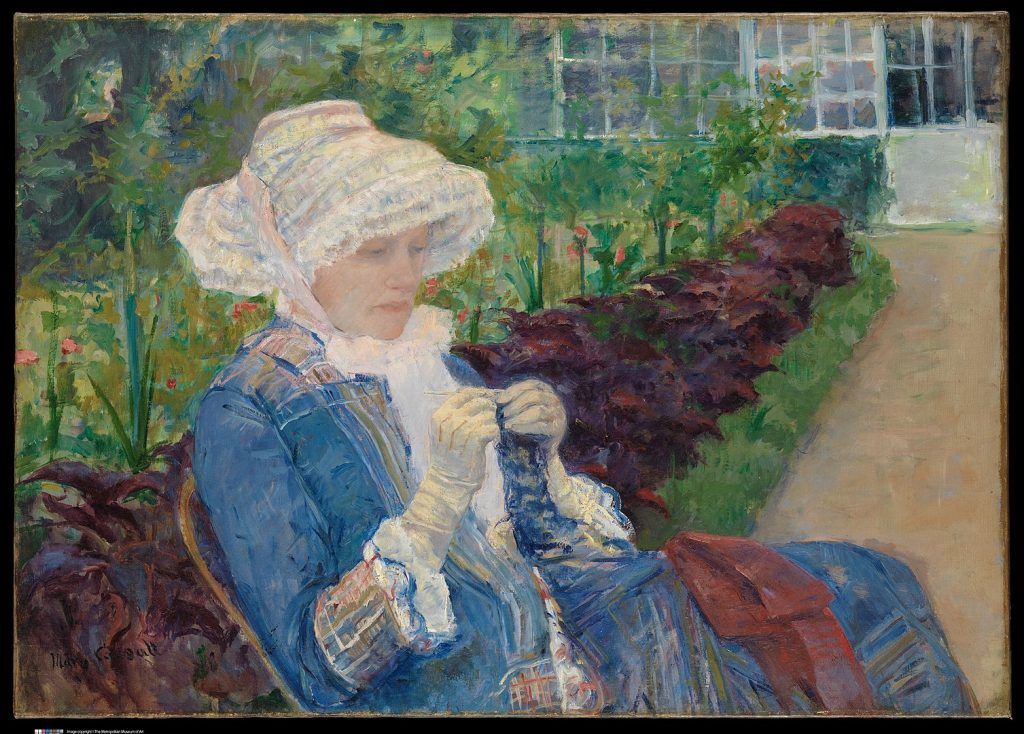
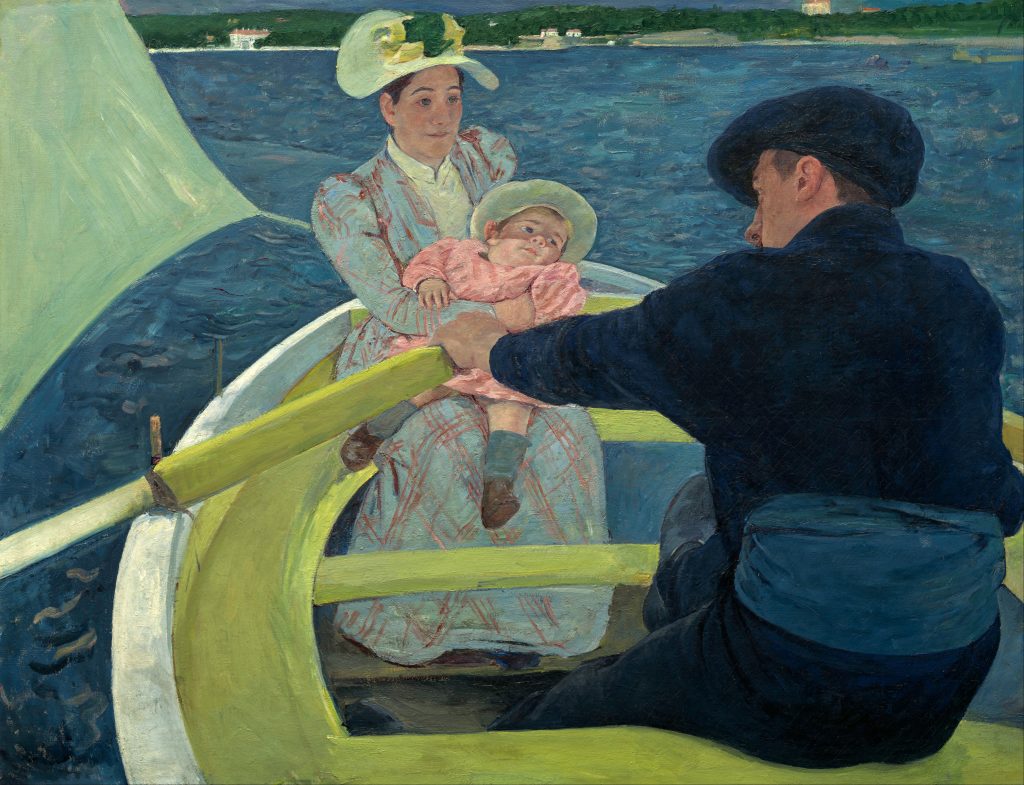
MOVING AWAY FROM IMPRESSIONISM
As a successful, highly trained woman artist who never married, Cassatt personified the “New Woman”. She “initiated the profound beginnings in recreating the image of the ‘new’ women”, drawn from the influence of her intelligent and active mother, Katherine, who believed in educating women to be knowledgeable and socially active.
Cassatt also made several portraits of family members during that period, of which Portrait of Alexander Cassatt and His Son Robert Kelso (1885) is one of her best regarded. Cassatt’s style then evolved, and she moved away from Impressionism to a simpler, more straightforward approach. She began to exhibit her works in New York galleries and after 1886, Cassatt no longer identified herself with any art movement and experimented with a variety of techniques.
Although Cassatt did not explicitly make political statements about women’s rights in her work, her artistic portrayal of women was consistently done with dignity and the suggestion of a deeper, meaningful inner life. Cassatt objected to being stereotyped as a “woman artist”, she supported women’s suffrage, and in 1915 showed eighteen works in an exhibition supporting the movement.

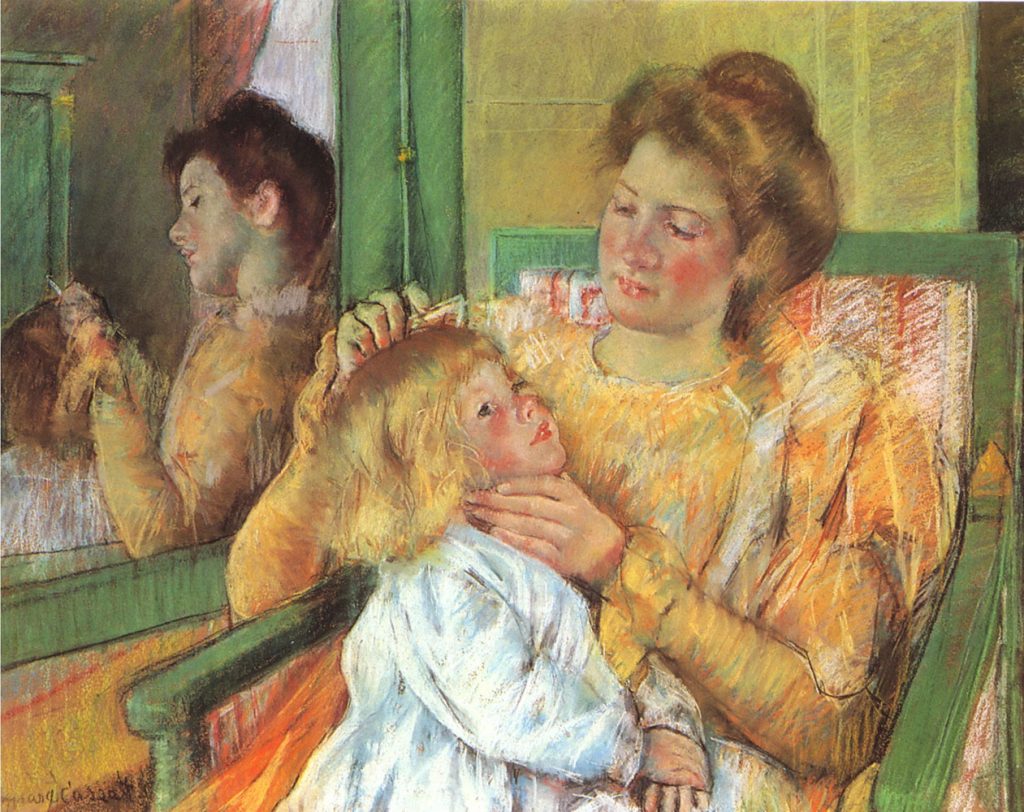
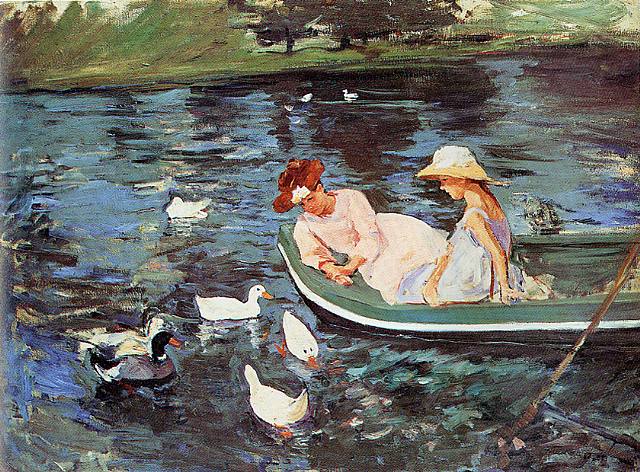
CREATIVE REPUTATION IN LATER LIFE
Cassatt’s later reputation is based on an extensive series of tenderly observed paintings and prints on the theme of the mother and child. Some of depict her own relatives, friends, or clients, although in her later years she used professional models in compositions that are often reminiscent of Italian Renaissance depictions of the Madonna and Child.
The 1890s were Cassatt’s busiest and most creative period. She became more diplomatic and less blunt in her opinions and also became a role model for young American artists who sought her advice. Though the Impressionist group disbanded, Cassatt still had contact with some of the members, including Renoir, Monet, and Pissarro
In 1891, she exhibited a series of highly original colored drypoint and aquatint prints, including Woman Bathing and The Coiffure, inspired by the Japanese masters shown in Paris the year before. Cassatt was attracted to the simplicity and clarity of Japanese design, and the skillful use of blocks of color. In her interpretation, she used primarily light, delicate pastel colors and avoided black (a “forbidden” color among the Impressionists). Adelyn Breeskin comments that these colored prints, “now stand as her most original contribution… adding a new chapter to the history of graphic arts…technically, as color prints, they have never been surpassed”.
She continued to be very productive in the years leading up to 1910. An increasing sentimentality is apparent and her work was popular with the public and the critics, but she was no longer breaking new ground, and her Impressionist colleagues who once provided stimulation and criticism were dying. She was hostile to such new developments in art as post-Impressionism, Fauvism and Cubism.
A trip to Egypt in 1910 impressed Cassatt with the beauty of its ancient art, but was followed by a crisis of creativity; not only had the trip exhausted her, but she declared herself “crushed by the strength of this Art”, saying, “I fought against it but it conquered, it is surely the greatest Art the past has left us … how are my feeble hands to ever paint the effect on me.”
Diagnosed with diabetes, rheumatism, neuralgia and cataracts in 1911, she did not slow down, but after 1914 she was forced to stop painting as she became almost blind.
Cassatt died on June 14, 1926 at Château de Beaufresne, near Paris, and was buried in the family vault at Le Mesnil-Theribus, France.



